In the previous tutorial, we discussed the classification and working principle of microphones. We learned that the microphone is an input transducer that converts sound waves into electrical signals. These audio signals are then amplified by a preamplifier and transferred to a main audio unit.
The unit might include an amplifier and/or filter circuit, or have circuitry that connects with a computer to save and store the audio. Audio that’s amplified or stored is reproduced using another type of transducer — a speaker.
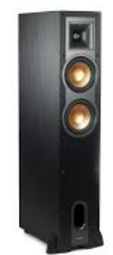
A speaker
A speaker is a type of output transducer that converts an electrical signal into an audio signal. Speakers are typically enclosed in a rectangular or square-shaped cabinet or casing, although there are many types of casings.
The enclosure and the loudspeaker
You might question the need for a cabinet or casing that holds a speaker but it’s an important element of this type of transducer.
Speakers produce sound via a diaphragm, a thin, paper-like membrane that moves back and forth in the presence of a sound wave (you’ll recall the diaphragm from the tutorial on microphones). Now, the front surface of a speaker, which is typically in the shape of a cone, will produce a sound wave of high air pressure. However, the back surface of this cone lowers the air pressure.
The sound generated from the front and back speaker is the same only their phase differs — the lower frequency sound (from the back) produces a larger wavelength than the high-frequency sound (from the front). The lower frequency sound wave will diffract more, essentially canceling out the front and back waves, which silences the bass frequency.
So, this is why there’s always a need to properly enclose the speakers. But the shape of this casing affects the quality of the sound (discussed below).
There are also different types of speakers/transducers, which produce different types of audio frequencies. Each transducer is called a driver, and the cabinet is known as a loudspeaker.
As a single speaker is incapable of providing a full range of audio frequencies, a loudspeaker offers driver units to support the frequencies. Essentially, a speaker driver is an electroacoustic component that makes a loudspeaker work.
The three different driver units include:
1. Tweeter – for high-frequency ranges
2. Mid-range driver – for middle-frequency ranges
3. Woofers – for low-frequency ranges
Types of speakers
Speakers can be classified in several different ways, including on the basis of amplification, construction, and casing.
Amplification
In terms of amplification, there are passive and active speakers.
- Passive speakers – has no built-in power amplifiers and, therefore, must connect to an external power amplifier to achieve high-power output. Most commercially available speakers are passive, which allows for their small size.
- Active speakers – include an inbuilt power amplifier for high and low-frequency sounds. Often referred to as powered speakers, these active ones live up to their name and are typically heavy and bulky. As a result, they’re used less commonly than passive speakers.
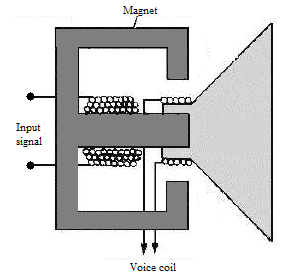
The construction of conventional speakers.
Construction
The classification of speakers based on their construction includes conventional, electrostatic, and ribbon speakers.
Conventional speakers – the most common type of speaker. It consists of a voice coil that’s attached to a diaphragm and a permanent magnet. When an oscillatory electric current is passed through the coil, it creates a magnetic force, thanks to the permanent magnet. This generates a mechanical motion in the diaphragm, which produces sound waves.
Electrostatic speaker – designed with its diaphragm between.two rigid and perforated metal plates. The diaphragm, which is a thin metal sheet, has the opposite charge of the perforated metal plates. As a result, each plate attracts the diaphragm with an equal and opposing force compared to the total force on the diaphragm, which is zero.
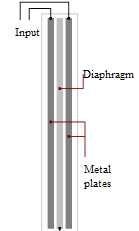
The construction of electrostatic speakers.
However, this force changes when an audio signal is applied to the metal plates. So, when plate ‘A’ is more positive than plate ‘B,’ the diaphragm moves toward plate ‘A,’ and vice versa. Each time an audio signal changes its signal, it causes a push-pull movement between the diaphragm and the plates. This “flexing” produces sound.
These kinds of speakers are less responsive to low-frequency signals and tend to be heavy and costly. Not surprisingly, they’re used less commonly than conventional speakers.
Ribbon speakers – comprised of a tall, thin metal ribbon (typically aluminum), which is suspended between two magnetic plates. When an audio signal is applied to the ribbon, it’s repelled and attracted to the magnetic plates (similar to how the electrostatic speaker’s plates react with its diaphragm).
This generates a vibration that produces sound. These types of speakers are also less responsive to low-frequency signals but, since the ribbon is so lightweight, it responds quickly to any signal changes.
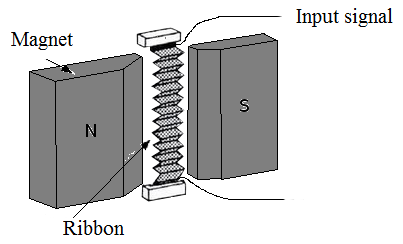
The construction of ribbon speakers.

Closed casing
Casing
Speakers can also be classified based on the type of casing or enclosure that they have and there are five common types: closed/sealed, ported, free air, band pass, and transmission line casings.
Closed or sealed (acoustic suspension) – an airtight enclosure, so when the driver moves back and forth, it will continually change the air pressure. This increases the pressure on the diaphragm, causing it to move back and forth quite quickly — producing crisp and accurate audio.

Ported casing
Ported (bass reflex) – this type of enclosure has is a hole in front of it, which equalizes the pressure inside and outside of the driver. Although it does not require any extra power to operate, it typically results in a less clean or clear audio output. But this type of casing has less distortion compared to the other enclosures.
Free-air (infinite baffle) – the woofer is mounted on a baffle, which isolates the front from the back wave. The baffle or the board extends so much that even the longest wave can never reach the front wave. As this system cannot practically be implemented, the free-air casing is typically a large, sealed box that requires low power and has little distortion.

Free-air casing
Band pass – the speaker is placed in an enclosure and the sound emanates from built-in ports. There are different types of band-pass enclosures, depending on the order (such as the 4th, 6th and, so on).
In a 4th-order band pass, for example, one side of the speaker is placed in a closed enclosure while the other side is in a ported enclosure. In this case, the woofer sounds louder than the bass reflex but has a narrower frequency response.

Band-pass
Transmission line (acoustic labyrinth) –the back wave of this speaker passes through a complex labyrinth (an irregular network path), which is of a fixed length and dampens the sound. This allows greater control and use of the speaker energy, providing a strong, low-frequency response that can reach the subsonic range (>45Hz).
Horn – this enclosure entails a horn-shaped casing that extends from a narrow to a broad diameter, making it easier for the sound waves to transit through the speakers. Ideally, the size of the horn in this enclosure must suit to the frequency range of the audio output. For example, a greater frequency should use a larger horn.

Transmission-line casing
The horn casing is best suited for tweeter and mid-range drivers. For woofer drivers, folded-horn enclosures can be used and take up less space.
These are the most common type of casings used for speakers, however there are several other options available. Examples include dipole, wall, push-pull, quarter and tapered-wave enclosures and others.
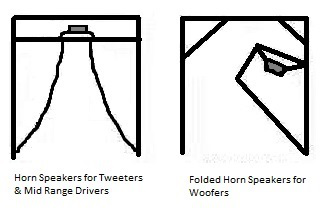
Straight and folded-horn casings.
In the next tutorial, we’ll learn about the basics of audio filters.
You may also like:
Filed Under: Audio, Tutorials

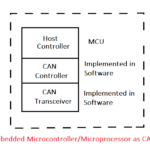
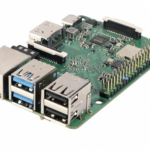
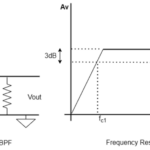
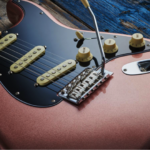



Questions related to this article?
👉Ask and discuss on Electro-Tech-Online.com and EDAboard.com forums.
Tell Us What You Think!!
You must be logged in to post a comment.